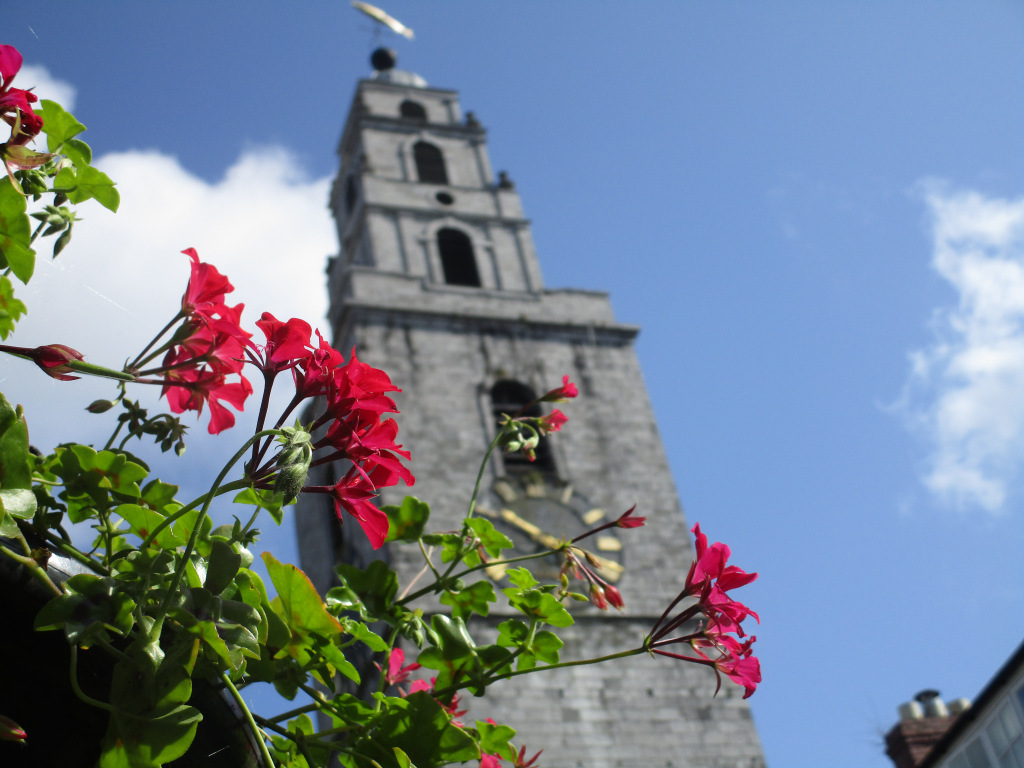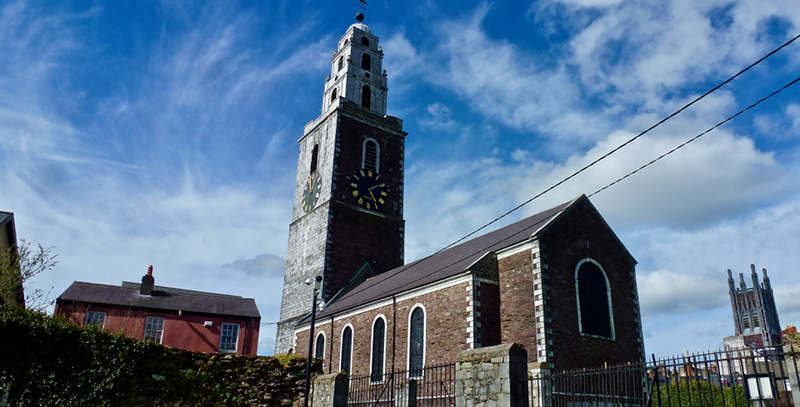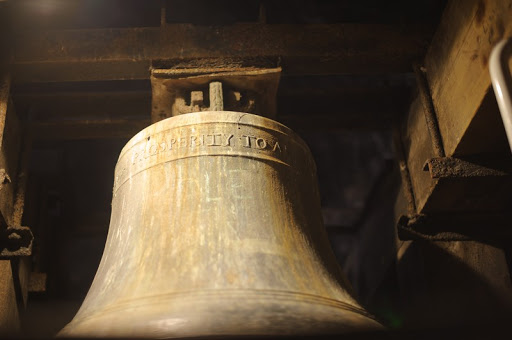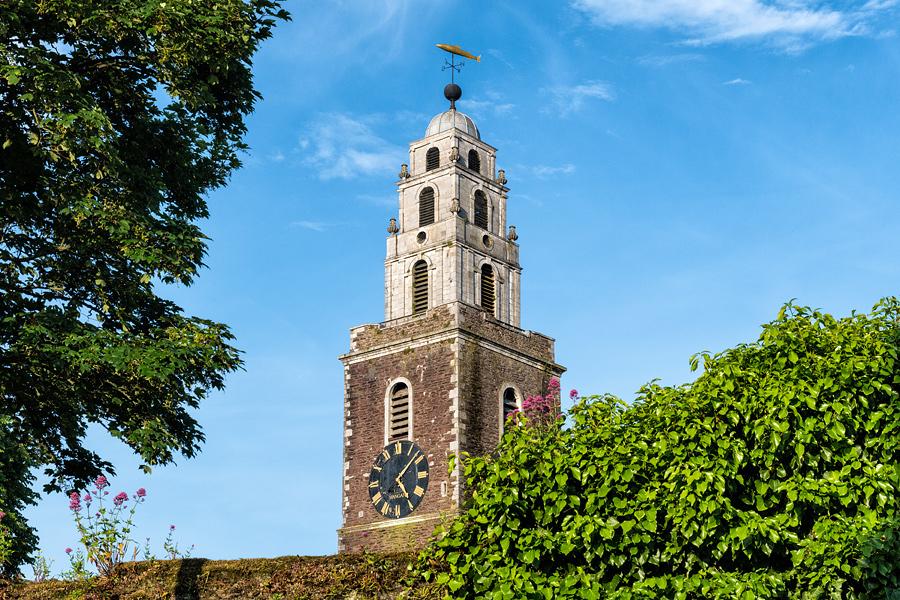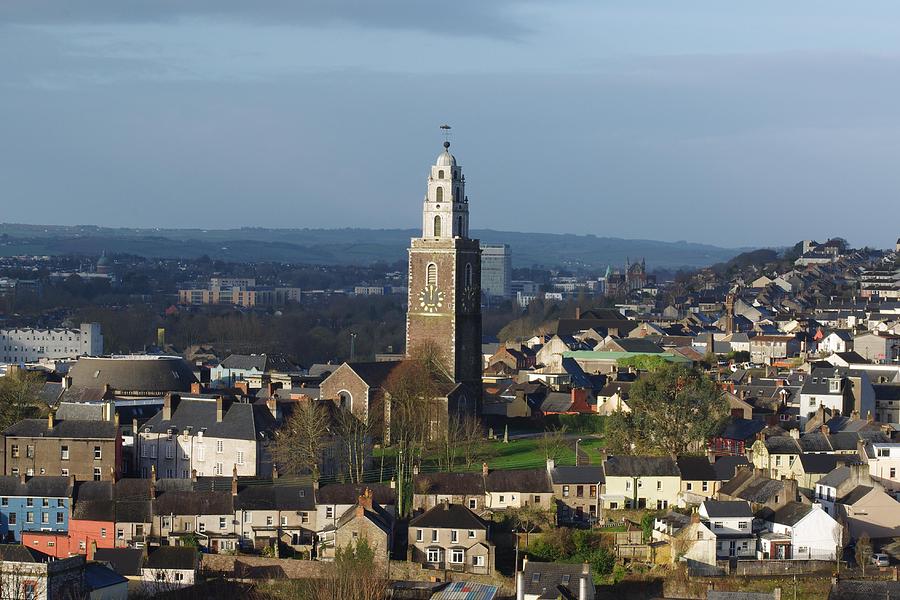St. Anne’s has been described as, “the most important ecclesiastical structure of any period, within the the city of Cork and its immediate environs, it is also one of the most important early 18th century churches in Ireland and one of a small number which still retains their original 18th century bells” – (2001 Architectural & Archaeological Appraisal – Colin Rynne for Southgate & Assoc.). It is the oldest church in continuous use in the city centre.
Built in 1722 as a chapel of ease to the former St. Mary’s Church Shandon, which was originally situated on this site but was destroyed in the Seige of Cork in 1690. The site where St Anne’s stands and St Mary’s stood, has been a site of worship since before medieval times.
The Tower forms a striking landmark, visible from many parts of the city, with its red sandstone (North & East) and white ashlar limestone (South & West). It is believed that the colours of the tower gave rise to the sporting colours of Cork.
The steps of the tower are built into the 7 foot thick walls and climb up past the clocks, through the belfry to the balcony 36.6 metres above the ground. The tower was raised in height in 1750 to accommodate the eight bells. The McOstrich family were involved in the creation of the tower and whenever a member of their family marries, the bells are rung in their honour.
The bells were cast by Abel Rudhall of Gloucester in 1750, and have been recast twice since in 1869 & 1908. They first rang out on the occasion of the marriage of Henry Harding to Catherine Dornan on the 7th December 1752. They still bear their original inscriptions, including the following:
‘When us you ring we’ll sweetly sing’
‘Since generosity has opened our mouths our tongues shall sing aloud its praise’
The bells weigh over 6 tonnes altogether (which is approximately the size of 2 elephants!) The bells are rung on a fixed bells system called an ‘Ellacombe’ system. The bell remains static and when you pull the rope, the clapper hits the bell.
The Clock was erected by Cork Corporation in 1847, and given the name ‘the four faced liar’ by local wits who noticed that the four clocks were not always in agreement of the exact time. The machinery of the clocks weigh 2 tonnes and the clock faces are 14 feet in diameter. The maker of the clock was James Mangan, who had a clock shop on St. Patrick’s St. until the 1980s. This was the first four-faced clock until the construction of Big Ben in London.
The fish shaped weather vane is a salmon, known locally as ‘de goldie fish’ and is over four meters long and painted in gold leaf. It symbolises the salmon fishing industry, which was very important to Cork and also the sign of a fish is very appropriate on a church as the fish is an early christian symbol for the name of the Lord.
Inside the Church of St. Anne’s some features of interest include a Victorian timber barrel vaulted ceiling, an early 18th century barley twist communion rail and a baptismal font from the original church of saint Mary’s, dated 1629. The walls are adorned with memorials to families associated with the church including one commemorating George Benson, a curate of the parish who died in 1832 a victim of the cholera outbreak. Another is dedicated to the Downes family, typical of many Irish families, who have sent their children far and wide. The tablet records the deaths of five sons, in New York, London, The South Seas, Bombay and the Cape of Good Hope.
The 1914-1918 War memorial is one of the finest of its time and was designed by Caulfield Orpen in Dublin.
The church also has five stained glass windows, beautifully colourful and of the highest craftsmanship, including Hubert McGoldrick’s oval St. Luke’s window.
St. Anne’s graveyard to the left of the church is the resting place of the Mahony family, including Francis Mahony (Fr. Prout) who penned the famous song ‘The Bells of Shandon’. Francis was the second child of Martin Mahony, son of Timothy Mahony – the founder of the Blarney Woolen Mills. Francis was ordained a priest in 1832 and appointed Chaplin of the North Infirmary (now the Maldron Hotel) and devoted himself to working with the stricken during the outbreak of cholera. He eventually left the priesthood to concentrate on writing. The name Fr. Prout comes from the name of a well learned but eccentric priest from Watergrasshill whom Mahony had admired.
The graveyard to the right at the bottom of Bob and Joan’s Walk, is now called Dr. Mary Hearn Park. Dr. Hearn was the wife of Robert T. Hearn, a rector of St. Anne’s from 1905 to 1939. She was known in the area for her generosity to the poor by way of offering her services for free to those whom she knew could not afford it, and regardless of denomination.
Behind St. Anne’s once stood the Greencoat School, built in 1716 for children of poor parents. Boys were taught reading writing and accounts, and girls were taught to knit sew and spin. Two statues, representing students of the school and the uniform of the day, ‘Bob & Joan’ once stood at the gates to the Greencoat school, They are now housed in the tower of St. Anne’s, and look pretty good for almost 300yrs old!
Behind Kinlay House is Skiddy’s Almshouse. Skiddy was a London wine merchant and native of Cork. In his will in 1584 he bequeathed a sum of £24 per year to the Mayor of Cork for 10 of the cities’ ‘honestest, poorest persons aged 50+’ to be housed in an Almshouse.
